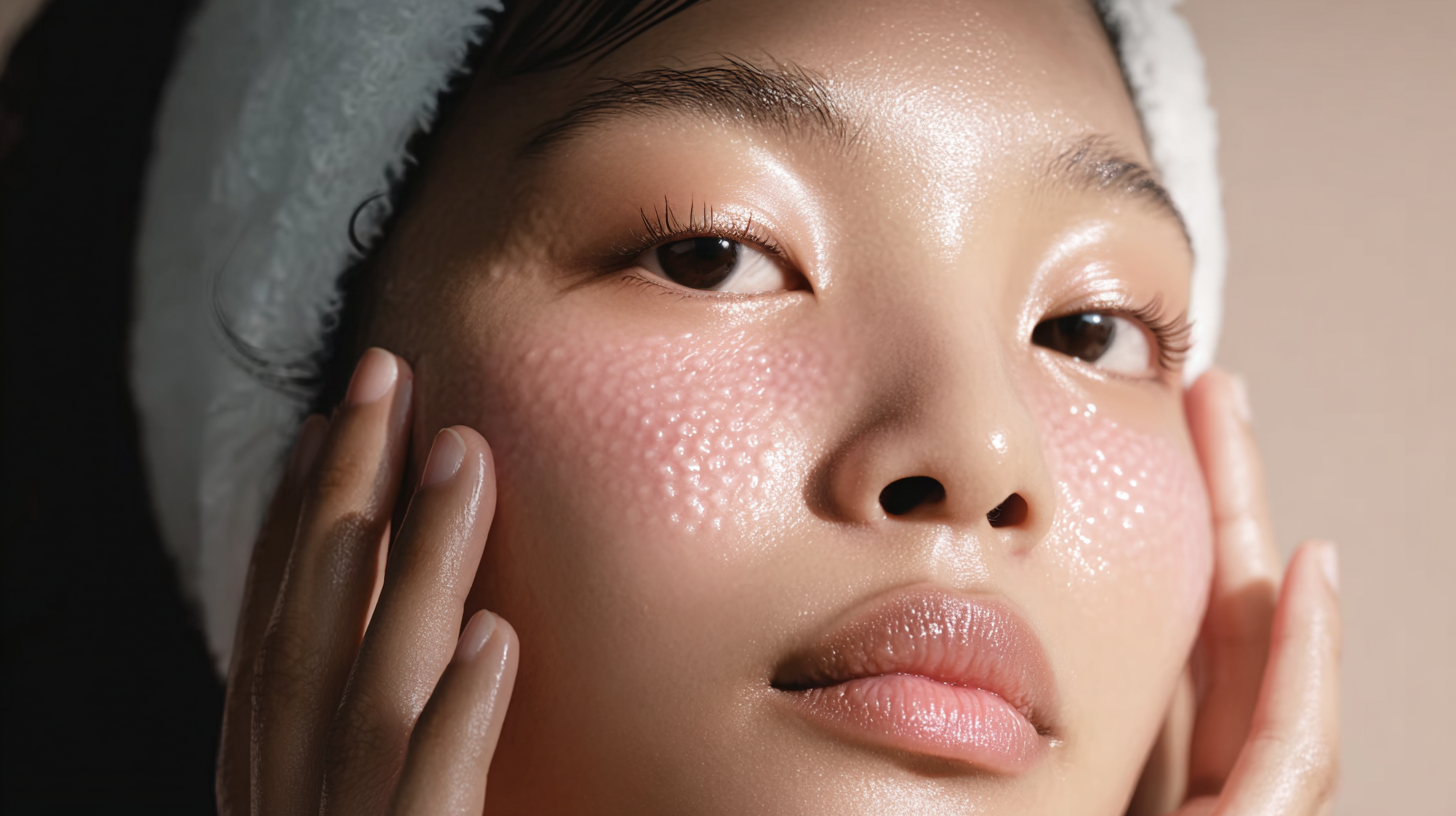How Clinics are Tackling Volume Loss in Patients Post Weight Loss
Significant weight loss, while a positive achievement for overall health, can introduce a distinct aesthetic challenge: a marked depletion of facial volume. This phenomenon has become an increasingly prevalent clinical concern, largely driven by the success of modern weight management strategies, including bariatric surgery and the widespread adoption of highly effective GLP-1 receptor agonists like Ozempic and Mounjaro. This has given rise to the clinical descriptor "Ozempic Face," which characterises the accelerated facial ageing, gauntness, and hollowed appearance that can result from rapid and substantial fat loss.
The clinical presentation of this condition is fundamentally different from that of chronological ageing. While chronological ageing involves a slow, concurrent degradation of bone, fat pads, and skin over decades, rapid weight loss induces a profound and accelerated depletion of the subcutaneous fat compartments that provide youthful facial contours. The underlying bone and skin structures may not have aged to the same degree, creating a distinct pathology of "deflation" and "hollowing". One study, for instance, documented an average reduction of 69.9% in the cheek fat pad among patients taking semaglutide. Consequently, clinicians are moving towards regenerative strategies that not only replace volume but also rebuild the skin’s inherent structural matrix.
Dr Ash Soni, UK & US trained Plastic Surgeon, comments, "The facial changes we are seeing from patients that are on GLP-1 drugs, and especially those that have undergone rapid weight loss, is a reduction in volume and the fat pads are changing," he explains. "They are decreasing the amount of fat in the volume of the face, and as a result of that, decreasing volume, there is a lack of elasticity, sagging of the tissue, and dropping of facial structure. Patients then notice a more aged look, less bounce back to the skin, and slightly looser skin on the face. With traditional age-related volume loss, this is more gradual."
This accelerated deflation is a primary concern for patients. Dr. Glyn Estebanez, Medical Director and Founder of Dr. Glyn Medispa, has seen a marked increase in patients with these specific issues. "The growing use of GLP-1 medications like Ozempic and Mounjaro is leading to a really significant rise in patients presenting to me with concerns around facial volume loss and laxity. Many of these patients are also in their 40s or 50s and entering perimenopause or menopause, which brings its own set of changes to skin, fat distribution, collagen loss and overall facial structure."
The areas most affected are often the most defining. "The mid-face is one of the most vulnerable areas following rapid weight loss," Dr. Estebanez continues. "We typically see a reduction in volume across the cheeks, leading to a flattening of natural contours, descent of facial fat pads and hollowing of the undereye region."
The industry's observations are directly mirrored by patient concerns. Research conducted by Professor Syed Haq on behalf of IMAGE Skincare confirms what doctors are seeing in their clinics. "From our research, we found that the number one concern from GLP-1 users is loose and sagging skin," Professor Haq reveals. "Secondary to this was firming and tightening. In conjunction, both of these reflect a strong focus on addressing skin laxity. Hydration was also highly valued, highlighting its importance alongside firming benefits."
Rebuilding the Foundation: Biostimulation with Poly-L-Lactic Acid (Sculptra)
A cornerstone of the regenerative approach is the use of biostimulators, with poly-L-lactic acid (PLLA-SCA), marketed as Sculptra, leading the charge. PLLA-SCA works by gradually stimulating the patient’s own collagen formation over a series of treatments. This process provides a durable and natural-looking correction of volume loss. A recent pivotal study evaluating PLLA-SCA for cheek wrinkles demonstrated its effectiveness and safety, with over 71% of participants showing significant improvement at 12 months. The study also highlighted improvements in skin radiance, tightness, and jawline contour, with high levels of patient satisfaction.
Intriguingly, new evidence suggests the mechanism of PLLA-SCA is more sophisticated than initially understood. A 2024 split-body clinical trial investigating PLLA-SCA for hip dell volumisation made a significant discovery. Ultrasonography measurements found that the volumisation resulted more from growth of the adipose layer than from the dermis, which was the traditionally accepted target. The study concluded that PLLA-SCA may promote not only elastogenesis but also adipogenesis, the formation of new fat cells. This represents a paradigm shift, suggesting PLLA-SCA can help restore the very adipose tissue lost during weight reduction, making it a truly foundational treatment for this patient demographic.
Dr. Soni explains its dual-action power: "Sculptra’s effect on Type One collagen is that it’s increasing it by 67% in 12 weeks so patients get a surge in Type One collagen and improved elasticity, which is helping patients as their faces are starting to drop. It’s also stimulating those youthful adipocytes, which are the fat cells that change in structure as we age – creating a lovely bounce back to the skin and, especially in those that have lost fat & volume quickly, restoring natural volume to the face and a real improvement in terms of skin quality."
This unique ability to work on both collagen and fat cells is what sets it apart for deflation. "In terms of volume restoration, we aren’t just seeing the firmness and improvement in elasticity, but also natural volume restoration, and I can’t stress the word natural enough!" Dr. Soni emphasises. "Sculptra is not a true volumiser, it differs from HA fillers in the way that it is a plant-derived collagen biostimulator, not a hyaluronic acid-based gel. I think Sculptra is a lot more effective for rapid weight loss, but you can use it in conjunction with HA fillers for those deflated folds. Sculptra treats the skin inside out because you are going from the deeper layers of the skin all the way through to the top layer."
Immediate Restoration and Refinement: Hyaluronic Acid Fillers
While biostimulators rebuild the facial framework over time, hyaluronic acid (HA) fillers, such as those in the Juvéderm family, offer immediate volume restoration. These products provide a direct replacement for lost volume, making them indispensable for targeted contouring and instant results. Their utility is particularly evident in correcting specific deficits in the mid-face, temples, or along the jawline where precise augmentation is required. This allows clinicians to address a patient’s primary concerns promptly while the regenerative effects of biostimulators develop. Dr. Estebanez uses a strategic combination of products to treat the entire facial structure. "For patients looking to address this, I use a multi-layered approach. Products like Juvéderm VOLUMA help rebuild the foundational structure of the mid-face and restore support without distortion. This perfectly complements HArmonyCa as a go-to for patients needing both collagen stimulation and additional tightness, to enhance long-term skin strength and quality.”
This approach signals a crucial shift in aesthetic medicine. The goal is no longer just to fill a line or inflate a cheek, but to restore overall balance and integrity. Dr. Estebanez calls this philosophy "Facial Harmonisation." "At Dr Glyn Medispa, we address this through Facial Harmonisation, an approach I’ve developed that moves away from augmentation and instead focuses on restoring balance, proportion, and facial integrity in a way that looks really natural and intentional. We’re not just analysing volume, we’re analysing the entire facial structure and we’re looking at how different features interact, tailoring a full suite of treatments to each patient’s anatomy and of course, life stage," he concludes.
Targeted Topical Volume Restoration
Recognising a gap in the market for at-home patient care, Image Skincare has developed VOL.U.LIFT, a topical product specifically formulated to address the skin changes associated with rapid, GLP-1 induced weight loss. Dr. Marc Ronert, co-founder of IMAGE Skincare and the plastic surgeon who developed their new VOL.U.LIFT concentrate saw the need for a targeted solution. "GLP-1 induced skin aging is a new phenomenon that is affecting patients in different ways, and there were no targeted solutions to address these concerns that had clinical studies to back up the efficacy; That’s why I developed VOL.U.LIFT. Using next-generation ingredients combined with our proprietary, patent-pending XOSM Technology, we create a product proven to nourish the skin’s barrier that can be used as a standalone product or accompanying professional procedures," he states. Dr. Ronert believes this marks the beginning of a new pillar in beauty: "There is a gap for this to become a new category and we're very proud to be the first and only topical solution intentionally formulated by a plastic surgeon to address the specific skin concerns that occur with GLP-1 usage and rapid weight loss induced ageing." This advanced serum aims to tackle what the company terms the four Ds: Deflation, Deep Wrinkles, Dehydration, and Density.
VOL.U.LIFT combines a potent blend of active ingredients designed to work synergistically:
L-ornithine amino acid is included to mimic the results of lipofilling by activating adipogenesis and lipogenesis, thereby increasing fatty tissue volume and promoting a fuller look.
Bakuchiol, a plant-based retinol alternative, stimulates collagen I, III, and IV to improve the appearance of wrinkles, skin firmness, and texture.
HA Silanol, a next generation hyaluronic acid combined with silicium, improves hydration and plumps the skin to restore the appearance of volume.
Plant-derived collagen fragments and Kangaroo Paw extract work to improve skin density and combat sagging by rebuilding the skin’s architecture and boosting integrin and elastin production.
Early clinical data for VOL.U.LIFT is promising. A 12 week study of subjects who had experienced significant weight loss found the product led to a 20.1% increase in the thickness of facial cheek skin and subcutaneous fat as measured by ultrasound. The trial also recorded notable improvements in skin firmness, elasticity, and a reduction in wrinkle severity. Dr. Sivamani elaborates on its mechanism: "In external clinical studies, L-Ornithine Amino Acid has been shown to promote swelling of adipocytes within the subcutaneous fat layer, leading to increased cell volume and diameter. This localised swelling contributes to the appearance of enhanced facial volume." He stresses that dosage is key. "The power of L-Ornithine Amino Acid in VOL.U.LIFT comes from the concentration, which is formulated at a percentage consistent with external clinical studies... This concentration ensures the ingredient performs at its highest potential within the formula."
The most effective management for post-weight loss volume depletion is not a single modality but a carefully curated, multi-layered treatment plan. A comprehensive strategy may involve initiating treatment with a biostimulator like Sculptra to rebuild the foundational collagen and adipose layers across the entire face. This can be complemented by the precise application of HA fillers to provide immediate refinement and contouring in key areas. The integration of a targeted topical product like Vol.u.lift into the patient’s daily routine serves to support overall skin health, enhance hydration, and improve skin quality, thereby protecting and augmenting the results of in-clinic procedures.











